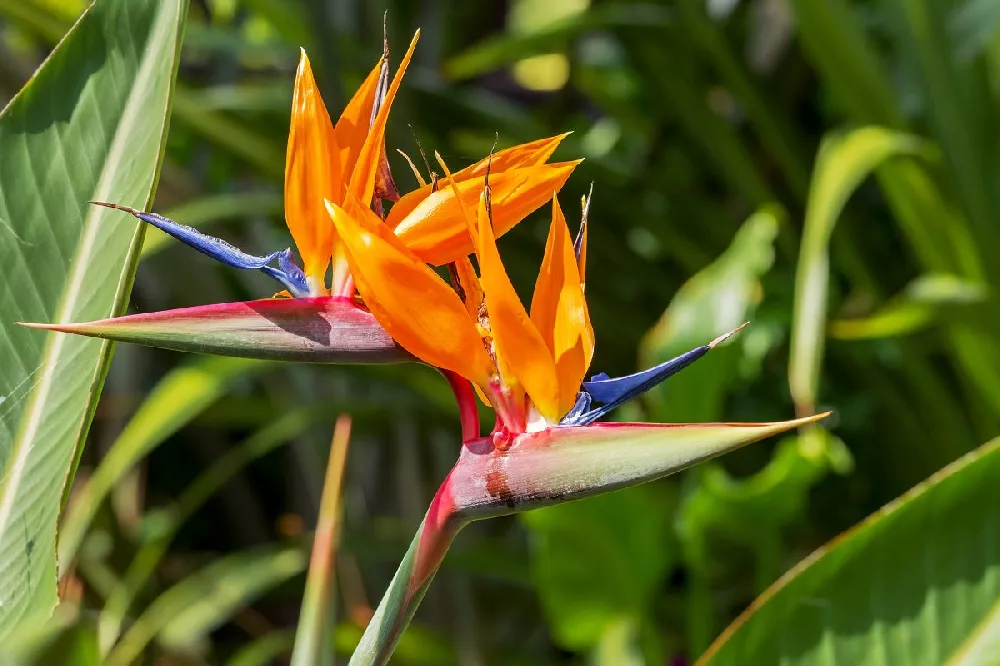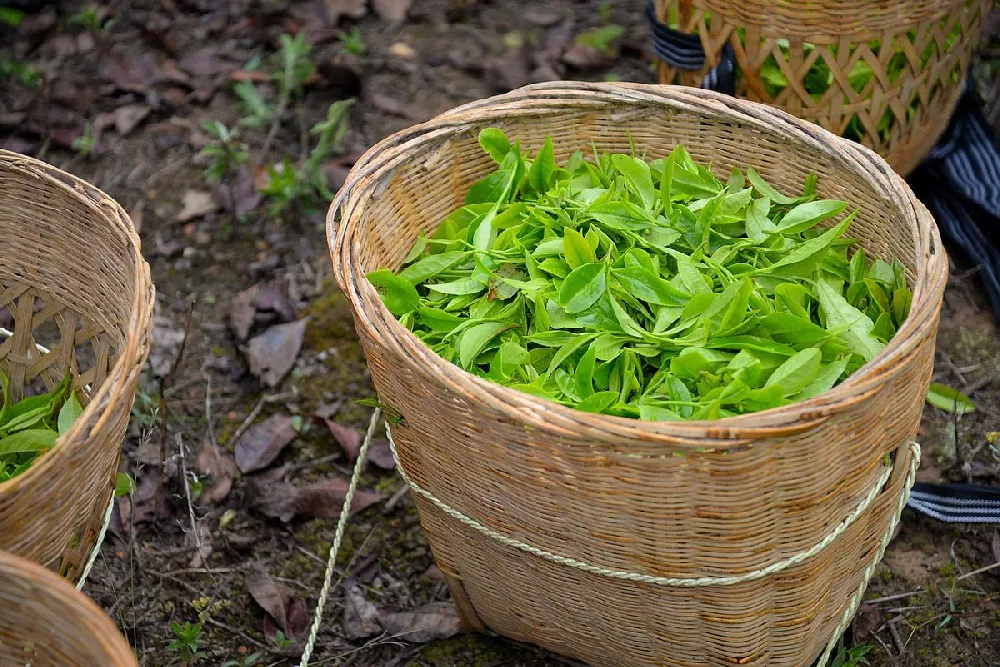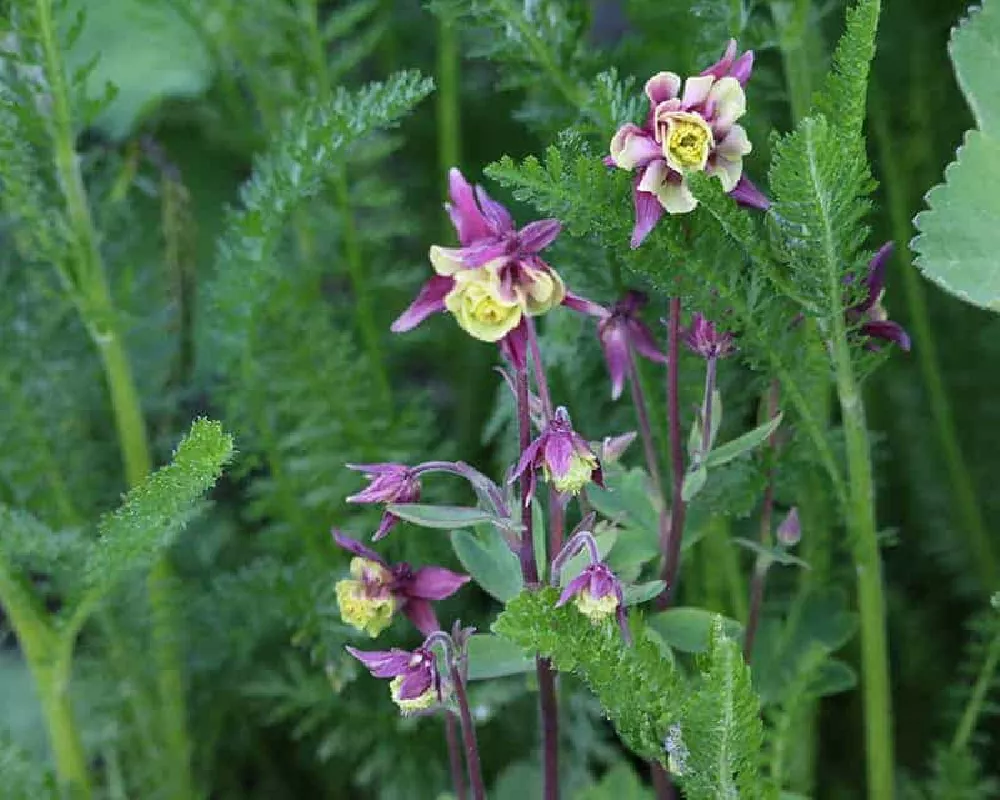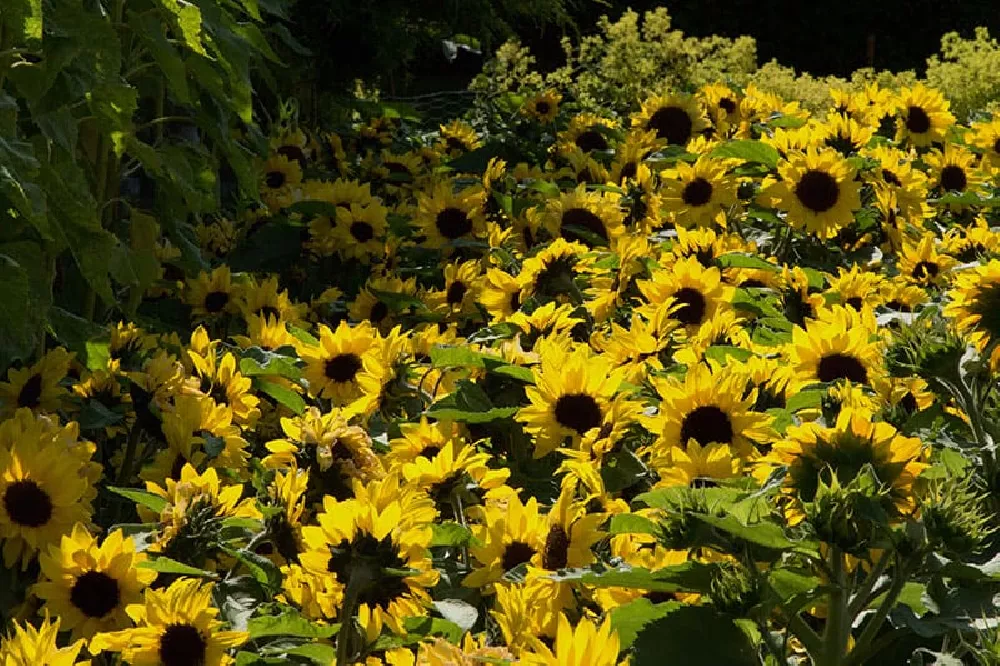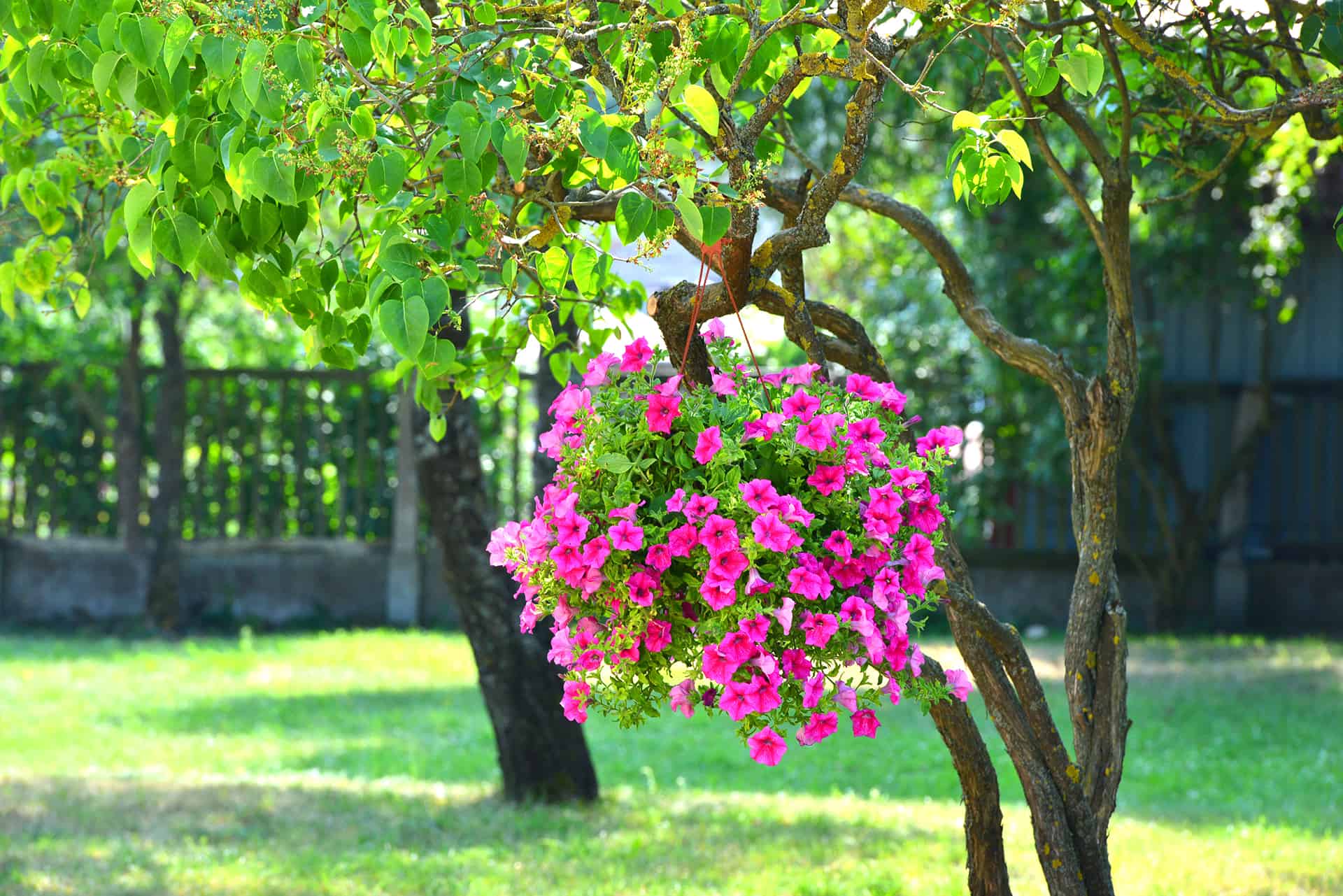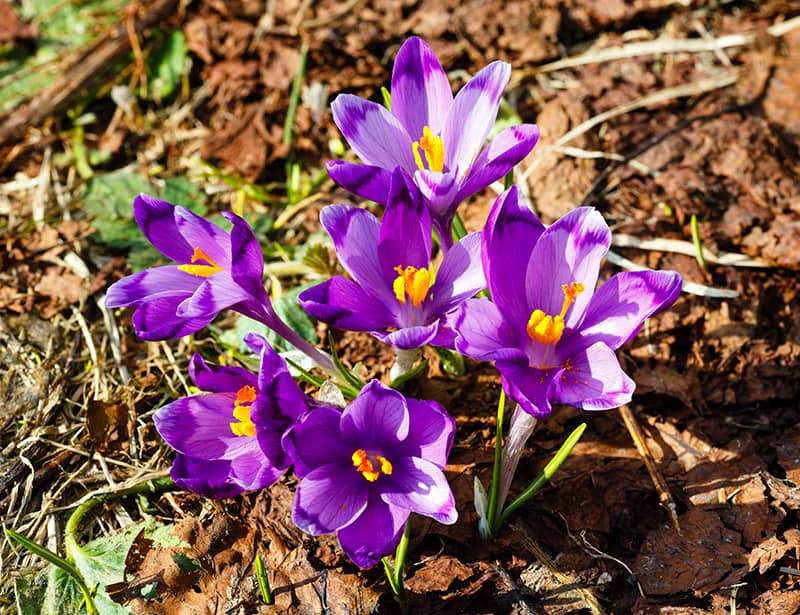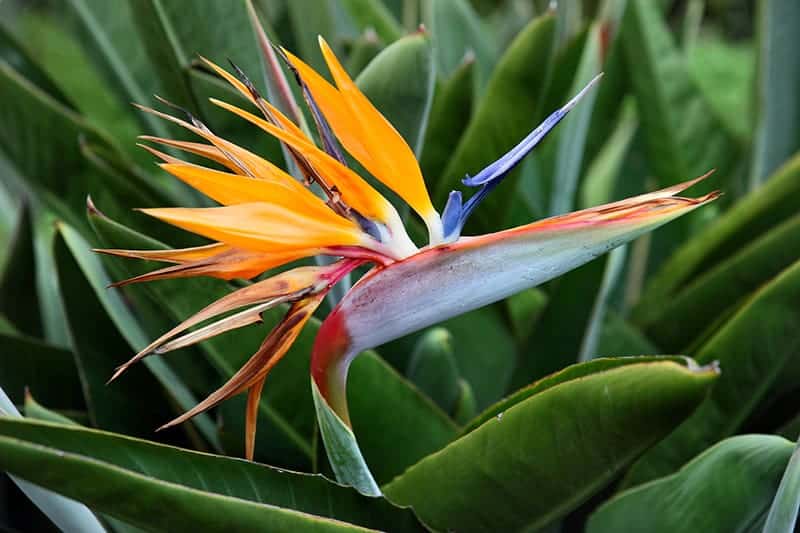- Home >
- State Flowers
State Flowers for Sale - Buying & Growing Guide
Filters
Price Range
Growing Zones
Plant Type
Flower Color
Sunlight
Mature Height
Plant Characteristics
7 Results
State Flowers for Sale – Buying & Growing Guide
Flowers add colors and vibrancy to your home & garden. They tell something about your persona.
And did you know that every major state had official flowers that represent them? This could be either for its history, environment, characteristics, etc.
Here is a list of flowers with pictures, and some nice info about them. Within the range of this short article, we’ll only talk about 36 flowers.
State Flower Varieties
1. Camellia

State Flower of: Alabama
Scientific Name: Camellia japonica
Mature Size: Up to 30 feet tall
USDA Hardiness Zones: 6-10
Water: Maintain moist soil
Light: Full sun to full shade
Soil: Well-draining, acidic, organically rich
This is an evergreen plant that can be grown as a shrub or small tree and is native to Asia. It can reach heights of up to 30 feet, but in cultivation, it rarely exceeds 12 feet tall. Camellia’s are known for their large and luscious flowers, which primarily come in shades of pink, red and white.
2. Alpine Forget-Me-Not

State Flower of: Alaska
Scientific Name: Myosotis alpestris
Mature Size: Up to 1 foot tall
USDA Hardiness Zones: 2-8
Water: Low moisture needs
Light: Partial shade
Soil: Well-draining
This perennial plant produces bright blue flowers that are almost exactly like true forget-me-not blooms. It thrives in rocky areas, growing along mountainsides in rock crevices. It has a bushy habit and is popular among pollinators.
3. Saguaro Cactus Blossom

State Flower of: Arizona
Scientific Name: Carnegiea gigantea
Mature Size: Up to 40 feet tall
USDA Hardiness Zones: 8-11
Water: Drought tolerant
Light: Full sun
Soil: Well-draining
This cactus is native to Arizona, California, and Mexico. They produce waxy flowers in creamy and yellow shades, which bloom from early spring to midsummer. Each flower opens up for less than 24 hours, typically with around four flowering each day during the blooming period. They measure between four and five inches across.
4. Apple Blossom

State Flower of: Arkansas
Scientific Name: Malus sp.
Mature Size: Up to 40 feet tall
USDA Hardiness Zones: 3-8
Water: Maintain moist soil
Light: Full sun to partial shade
Soil: Well-draining, organically rich
The blossom of the apple tree is the state flower of Arkansas, which has a long history of producing apple trees. It still holds an annual apple festival in Washington County. It is also the state flower of Michigan, which is known for its many orchards. These flowers can be red, pink, or white, and each has five petals. There are many types of apple trees that grow natively across much of the temperate northern hemisphere.
5. California Poppy

State Flower of: California
Scientific Name: Eschscholzia californica
Mature Size: Up to 5 feet tall
USDA Hardiness Zones: 5-10
Water: Drought tolerant
Light: Full sun
Soil: Well-draining
This US and Mexican native can be an annual or perennial plant depending on the climate it is grown in. This plant is widely cultivated for its vibrant golden-orange cup-shaped flowers that bloom from early spring through to fall. It is tolerant of heat, drought and sandy and poor soils.
6. Rocky Mountain Columbine

State Flower of: Colorado
Scientific Name: Aquilegia caerulea
Mature Size: Up to 2 feet tall
USDA Hardiness Zones: 3-9
Water: Average moisture needs
Light: Partial shade
Soil: Well-draining, rich
This is a perennial plant native to Arizona and New Mexico. It has a clumping, upright habit, producing masses of flowers in two shades of blue with yellow stamens. The flowers bloom in early spring and summer for around six weeks.
7. Mountain Laurel

State Flower of: Connecticut and Pennsylvania
Scientific Name: Kalmia latifolia
Mature Size: Up to 30 feet tall
USDA Hardiness Zones: 4-9
Water: Average moisture needs
Light: Full sun to full shade
Soil: Well-draining, acidic
This evergreen shrub is native to the eastern United States. It flowers in clusters, with blooms that are bell-shaped and typically in shades of pink or white, though some red varieties exist. Flower buds are deep pink, opening up in late spring and early summer.
8. Peach Blossom

State Flower of: Delaware
Scientific Name: Prunus persica
Mature Size: Up to 25 feet tall
USDA Hardiness Zones: 5-9
Water: Average moisture needs
Light: Full sun
Soil: Well-draining
These flowers are produced by deciduous peach trees, which are native to China. The small blossoms appear on the tree in early spring before the arrival of the foliage. They have five petals and a candy-floss pink color, measuring around an inch across.
9. Orange Blossom

State Flower of: Florida
Scientific Name: Citrus sinensis
Mature Size: Up to 20 feet tall
USDA Hardiness Zones: 9-10
Water: Average to high moisture needs
Light: Full sun
Soil: Well-draining, acidic
The flowers produced by orange trees are unsurprisingly the state flowers for Florida, as orange trees are an agriculturally important plant in this state. The flowers are highly fragrant and are believed to be a symbol of good fortune. They arrive in clusters, in vibrant shades of red or orange.
10. Cherokee Rose

State Flower of: Georgia
Scientific Name: Rosa laevigata
Mature Size: Up to 30 feet tall
USDA Hardiness Zones: 7-9
Water: Average moisture needs
Light: Full sun
Soil: Well-draining
This evergreen shrub is native to Asia but has become naturalized in the US, where it is often considered an invasive species. The plant produces pure white flowers with pale yellow stamen, with petals that spread wide open to form a flat shape. They have a pleasant fragrance and measure up to four inches across.
11. Hawaiian Hibiscus

State Flower of: Hawaii
Scientific Name: Hibiscus brackenridgei
Mature Size: Up to 30 feet tall
USDA Hardiness Zones: 12-13
Water: Average moisture needs
Light: Full sun
Soil: Well-draining, fertile
This Hawaiian native can grow as a sprawling shrub or an upright tree. It produces bright yellow flowers, which bloom from late winter through to summer. It is a popular ornamental plant in garden borders in Hawaii and can also be kept as a houseplant in cooler climates.
12. Syringa

State Flower of: Idaho
Scientific Name: Philadelphus lewisii
Mature Size: Up to 12 feet tall
USDA Hardiness Zones: 4-9
Water: Low moisture needs
Light: Full sun to partial shade
Soil: Well-draining
Also known as ‘mock orange,’ this shrub is native to western North America. It blooms from late spring to early summer, producing clusters of cup-shaped white flowers, which have a fragrance very similar to orange blossoms. It is drought-tolerant but can also survive in moist soils.
13. Violet

State Flower of: Illinois, New Jersey, Wisconsin, and Rhode Island
Scientific Name: Viola
Mature Size: Up to 10 inches tall
USDA Hardiness Zones: 3-8
Water: Average moisture needs
Light: Full sun
Soil: Well-draining, rich
There are as many as 600 species of violet, which are native to temperate regions in the northern hemisphere. One of the most common types of violet in Illinois is the Viola sororia, which was the first of four states to declare the violet as their state flower in 1907. These blue-purple flowers grow among woodlands and wetlands in the wild.
14. Peony

State Flower of: Indiana
Scientific Name: Paeonia
Mature Size: Up to 4 feet tall
USDA Hardiness Zones: 3-9
Water: Average moisture needs
Light: Full sun to partial shade
Soil: Well-draining
This flower is native to Europe, Western North America, and Asia and has been the state flower of Indiana since 1957, taking over from the zinnia. Peony plants produce luscious flowers in a wide range of colors and can be single or double blooms. They typically bloom in late spring or early summer for a little over a week.
15. Wild Rose

State Flower of: Iowa and North Dakota
Scientific Name: Rosa arkansana
Mature Size: Up to 3 feet tall
USDA Hardiness Zones: 4-8
Water: Average moisture needs
Light: Partial shade
Soil: Well-draining
Also known as ‘prairie rose,’ this flower is native to the central United States and is the state flower of both Iowa and North Dakota. The plant produces pink flowers during summer that measure around two inches across. They typically present at the tips of new growth in clusters of up to four blooms.
16. Sunflower

State Flower of: Kansas
Scientific Name: Helianthus annuus
Mature Size: Up to 12 feet tall
USDA Hardiness Zones: 2-11
Water: Average moisture needs
Light: Full sun
Soil: Most soil types
The iconic sunflower has been the state flower of Kansas since 1903 and the state is commonly known as ‘the sunflower state.’ This annual plant is native to North America and produces huge flowers measuring up to twelve inches across in deep shades of orange and yellow. It grows easily in a wide range of conditions.
17. Goldenrod

State Flower of: Kentucky and Nebraska
Scientific Name: Solidago gigantea
Mature Size: Up to 6 feet tall
USDA Hardiness Zones: 5-9
Water: Average moisture needs
Light: Full sun to partial shade
Soil: Most soil types
This North American native is a relative of the sunflower and is widespread throughout every state of the US and every province in Canada. Its flowers are arranged along the end of the stems, with hundreds of tiny yellow blooms crowded together to put on a showy floral display.
18. Magnolia

State Flower of: Louisiana and Mississippi
Scientific Name: Magnolia grandiflora
Mature Size: Up to 120 feet tall
USDA Hardiness Zones: 6-10
Water: Drought tolerant
Light: Full sun
Soil: Well-draining
This tree is native to the southeastern United States. It produces white flowers with a waxy texture. These flowers are fragrant, with a scent reminiscent of lemon. The blooms are large, measuring up to 12 inches across. The plant takes the shape of a medium or large evergreen tree, with a pyramid shape. This is a popular ornamental tree that is widely grown in windy areas and is tolerant of drought once mature.
19. White Pine Cone and Tassel

State Flower of: Maine
Scientific Name: Pinus strobus
Mature Size: Up to 200 feet tall
USDA Hardiness Zones: 3-8
Water: Average moisture needs
Light: Full sun to partial shade
Soil: Well-draining, acidic
The white pine cone and tassel has been the national flower of Maine since 1895. It grows from the white pine tree, which is also the national tree of the state. It is native to North America and is thought to be the largest type of conifer tree in the northeastern United States. Despite not technically being a flower, the white pine cone and tassel was selected by the residents of Maine due to the long history of the white pine tree and its importance in the state.
20. Black-Eyed Susan

State Flower of: Maryland
Scientific Name: Rudbeckia hirta
Mature Size: Up to 3 feet tall
USDA Hardiness Zones: 3-9
Water: Maintain moist soil
Light: Full sun to partial shade
Soil: Well-draining
This plant is native to the north and east United States, and it has become naturalized in the western states as well. It is an annual plant that can reach heights of 40 inches, producing yellow flowers with long and slender petals and a central brown or black disc. Flowers typically measure around four inches across.
21. Mayflower

Credit to Fritzflohrreynolds
State Flower of: Massachusetts
Scientific Name: Epigaea repens
Mature Size: Up to 1 foot tall
USDA Hardiness Zones:
Water: Maintain moist soil
Light: Full sun to partial shade
Soil: Well-draining
The mayflower was adopted as the state flower of Massachusetts in 1918. It is a fitting choice for the state, as the ship that brought the pilgrims to the shores of Massachusetts famously shared the same name. These pretty white flowers resemble jasmine flowers and sometimes become flushed with pink. They have a spicy scent and bloom from March to June.
22. Pink and White Lady’s Slipper

State Flower of: Minnesota
Scientific Name: Cypripedium reginae
Mature Size: Up to 5 feet tall
USDA Hardiness Zones: 3-8
Water: Maintain moist soil
Light: Partial shade
Soil: Fertile, boggy
This is a rare wildflower, which is prohibited by law from being picked or uprooted in Minnesota, where it has been the state flower since 1902. This plant is a type of orchid that produces pretty flowers in an unusual shape, in shades of pink and white. It is easy to see how this flower got its name, as the blooms resemble tiny slippers. They bloom in midsummer for a few weeks and have a lifespan of up to 100 years.
23. Hawthorn

State Flower of: Missouri
Scientific Name: Crataegus punctata
Mature Size: Up to 30 feet tall
USDA Hardiness Zones: 3-9
Water: Average moisture needs
Light: Full sun to partial shade
Soil: Well-draining
This thorny shrub or tree is native to most of eastern North America. It was adopted as the state flower of Missouri in 1923, where it is a popularly cultivated plant in backyards and in public places. It is named after the fruits it produces, which are called ‘haws.’ Flowers are white, have five petals, and bloom in June.
24. Bitterroot

State Flower of: Montana
Scientific Name: Lewisia rediviva
Mature Size: Up to 1 foot tall
USDA Hardiness Zones: 3-8
Water: Low moisture needs
Light: Full sun to partial shade
Soil: Sandy, rocky, well-draining
This plant is also known as the ‘resurrection flower,’ as it is able to survive an entire year without water. It has been the state flower of Montana since 1895, where it is found growing in the valleys of mountains. This flower is pink and has a very short stem, making it appear as though it is blooming straight out of the ground. It gets its name from the fact that the root of the plant was an important source of food amongst Native Americans.
25. Sagebrush

State Flower of: Nevada
Scientific Name: Artemisia tridentata
Mature Size: Up to 10 feet tall
USDA Hardiness Zones: 4-9
Water: Low moisture needs
Light: Full sun
Soil: Well-draining, sandy
This plant is native to North America, where it thrives in cold and dry conditions. It is a shrub with pale gray foliage that produces yellow flowers. These flowers have been the state flower of Nevada since 1917.
26. Purple Lilac

State Flower of: New Hampshire
Scientific Name: Syringa vulgaris
Mature Size: Up to 20 feet tall
USDA Hardiness Zones: 3-8
Water: Average moisture needs
Light: Full sun
Soil: Well-draining
This deciduous shrub produces clusters of bright lilac flowers from April through to May. They have an alluring fragrance, which makes them popularly cultivated for use in perfumes.
27. Yucca Flower

State Flower of: New Mexico
Scientific Name: Yucca
Mature Size: Up to 20 feet tall
USDA Hardiness Zones: 3-8
Water: Average moisture needs
Light: Full sun
Soil: Well-draining
These perennial trees and shrubs are known for their sword-like foliage. They produce creamy colored flowers on a tall spike in late spring or early summer, which give off a pleasant scent.
28. Rose

State Flower of: New York
Scientific Name: Rosa
Mature Size: Up to 20 feet tall
USDA Hardiness Zones: 2-11
Water: Average moisture needs
Light: Full sun
Soil: Well-draining
This popular flower has been the state flower of New York since 1955. Roses are renowned for their beauty and come in a huge variety of styles and colors.
29. Flowering Dogwood

State Flower of: North Carolina
Scientific Name: Cornus florida
Mature Size: Up to 50 feet tall
USDA Hardiness Zones: 5-9
Water: Maintain moist soil
Light: Full sun to partial shade
Soil: Well-draining
The flower of this plant blooms from April to June and was selected as the state flower of North Carolina in 1941. Flowers can be white, pink, or red.
30. Scarlet Carnation

State Flower of: Ohio
Scientific Name: Dianthus caryophyllus
Mature Size: Up to 3 feet tall
USDA Hardiness Zones: 6-9
Water: Average moisture needs
Light: Full sun
Soil: Well-draining
This flower was chosen to represent the state of Ohio in 1904, as a tribute to the late President William McKinley, who was from Ohio, after he was assassinated in 1901. It is a popular plant and cut flower, blooming from April to August.
31. Oklahoma Rose

State Flower of: Oklahoma
Scientific Name: Rosa odorata
Mature Size: Up to 5 feet tall
USDA Hardiness Zones: 2-11
Water: Average moisture needs
Light: Full sun
Soil: Well-draining
This red flower has been the state of Oklahoma since 2004. It is said to represent the blood shed of the Native American tribes who were forced out of the state in the 1800s.
32. Oregon Grape

State Flower of: Oregon
Scientific Name: Mahonia aquifolium
Mature Size: Up to 4 feet tall
USDA Hardiness Zones: 5-9
Water: Average moisture needs
Light: Full sun to partial shade
Soil: Well-draining
This plant produces yellow flowers that give way to purple fruits. Despite its name, these fruits bear no resemblance to the type of grapes you would typically eat from the fruit bowl. They usually bloom in June.
33. Yellow Jessamine

State Flower of: South Carolina
Scientific Name: Gelsemium sempervirens
Mature Size: Up to 20 feet tall
USDA Hardiness Zones: 7-11
Water: Average moisture needs
Light: Full sun to partial shade
Soil: Well-draining
This plant produces sweet-smelling yellow flowers that bloom from March to April, signaling the beginning of spring.
34. Iris

State Flower of: Tennessee
Scientific Name: Iris
Mature Size: Up to 4 feet tall
USDA Hardiness Zones: 3-9
Water: Average moisture needs
Light: Full sun to full shade
Soil: Well-draining
This flower was named the state flower of Tennessee in 1933. It blooms from April to August in a wide range of colors, producing unusual looking blooms that flower year after year.
35. Sego Lily

Credit to Bill Bouton
State Flower of: Utah
Scientific Name: Calochortus nuttallii
Mature Size: Up to 1.5 feet
USDA Hardiness Zones: 3-7
Water: Low moisture needs
Light: Full sun
Soil: Well-draining
This perennial plant produces flowers with three large cream-colored petals. The flowers can measure up to three inches across and have red, purple, and yellow markings at their center. This has been the state flower of Utah since 1911.
36. Indian Paintbrush

State Flower of: Wyoming
Scientific Name: Castilleja linariaefolia
Mature Size: Up to 3 feet tall
USDA Hardiness Zones: 3-9
Water: Average moisture needs
Light: Full sun to partial shade
Soil: Well-draining
This perennial plant produces cup-shaped flowers that look as though they have been dipped in red paint, which is why they are commonly known as Indian paintbrush. These flowers are semi-parasitic and bloom from April to June.
